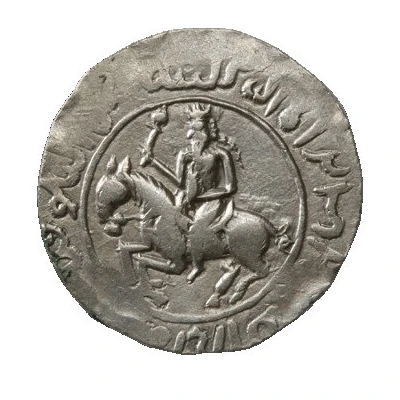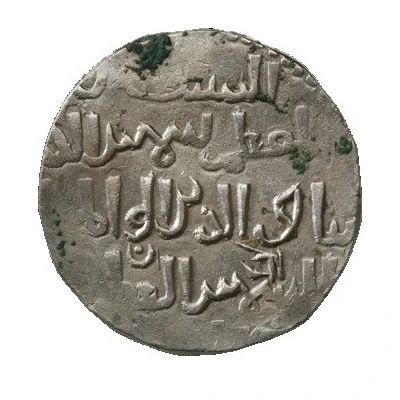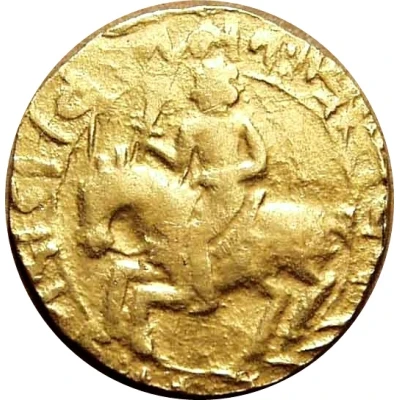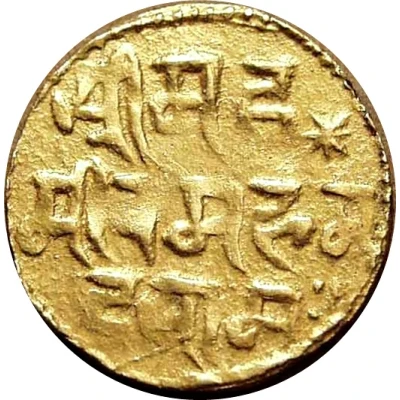


Obverse © simoneo80 – Reverse © davidmus
1 Tanka - Shams al-Din Iltutmish ND
| Silver | 10.89 g | 27.5 mm |
| Issuer | Sultanate of Bengal (Indian Sultanates) |
|---|---|
| Type | Standard circulation coin |
| Years | 1210-1223 |
| Value | 1 Tanka |
| Currency | Tanka (1342-1576) |
| Composition | Silver |
| Weight | 10.89 g |
| Diameter | 27.5 mm |
| Shape | Round (irregular) |
| Demonetized | Yes |
| Updated | 2024-10-05 |
| Numista | N#74561 |
|---|---|
| Rarity index | 100% |
Reverse
Lettering: al-sultan / al-mu‘azzam shams al-d / unya wa-l-din abu’l-muzaffar / iltutmish al-qutbi / (nasir amir al-mu’minin)
Translation: “The Mighty Sultan, Sun of the World and Faith, Father of Victory, Iltutmish al-Qutbi, Helper of the Commander of the Faithful”
Comment
Historical note:The Punjab was invaded by Muslim powers several times. The Ghaznawid Mahmud ibn Sebuktekin annexed it and carried huge amounts of booty back to Ghazna. The Ghurid, ‘Ala al-Din Husayn, taking advantage of the conflict between the Ghaznawids and the Great Saljuqs, burned the city of Ghazna to the ground and annexed what was left of the Ghaznawids’ lands to his own.After overthrowing the Hindu prince of Ajmer and Delhi in 588 H (1192 AD) and that of Benares and Kanawj in 590 (1194), the Ghurid Mu‘izz al-Din Muhammad ibn Sam gained most of northern India, almost as far as Delhi. He appointed as governor of these newly conquered lands Qutb al-Din Aybak, who marched his army to Delhi and established his headquarters there. Muslim control of northern India now became even stronger as Aybak extended the Ghurid territories to Gujarat, while Ikhtiyar al-Din Muhammad Khalji took East Bengal and ruled there from 594-603/1198-1206.
The defeat of the Ghurid, Mu‘izz al-Din Muhammad ibn Sam, by the Khwarazmshah leader, ‘Ala al-din Muhammad, caused a rebellion in the Punjab, and in 602 (1206) Mu‘izz al-Din Muhammad ibn Sam was assassinated. He was succeeded by his nephew Mahmud ibn Muhammad, but real power lay in the hands of Aybak who ruled in Lahore on behalf of the Ghurids, but soon claimed independence from them. When Aybak died in 607 (1210) he was succeeded by his son Aram Shah, but the nobles in Delhi refused to accept him and chose Shams al- Din Iltutmish, Aybak’s son-in-law and the chief of his slaves, as their new ruler.
Iltutmish received confirmation of his robe of honour and title nasir amir al-mu’minin (Helper of the Commander of the Faithful) from the ‘Abbasid Caliph al-Mustansir in 626 (1229) and remained on the throne for twenty-six years. During his reign Iltutmish consolidated the Delhi Sultanate, and added to it the upper Punjab, Sind and Malwa.
This beautiful silver tanka, with the horse rearing up while its crowned rider brandishes a mace, was struck in Bengal under the governorship of Husam al-Din ‘Imad in the name of Iltutmish. The word al-qutbi on the reverse refers to the fact that Iltutmish began his career as a slave of Qutb al-din Aybak.
Interesting fact
One interesting fact about this coin is that it was issued during the reign of Shams al-Din Iltutmish, who was the third Sultan of the Sultanate of Bengal and ruled from 1210 to 1223. He was known for his military campaigns and administrative reforms, which helped to consolidate the power of the Sultanate and promote trade and commerce in the region. The coin itself is made of silver and weighs 10.89 grams, which was a significant amount for a circulating coin at that time.

